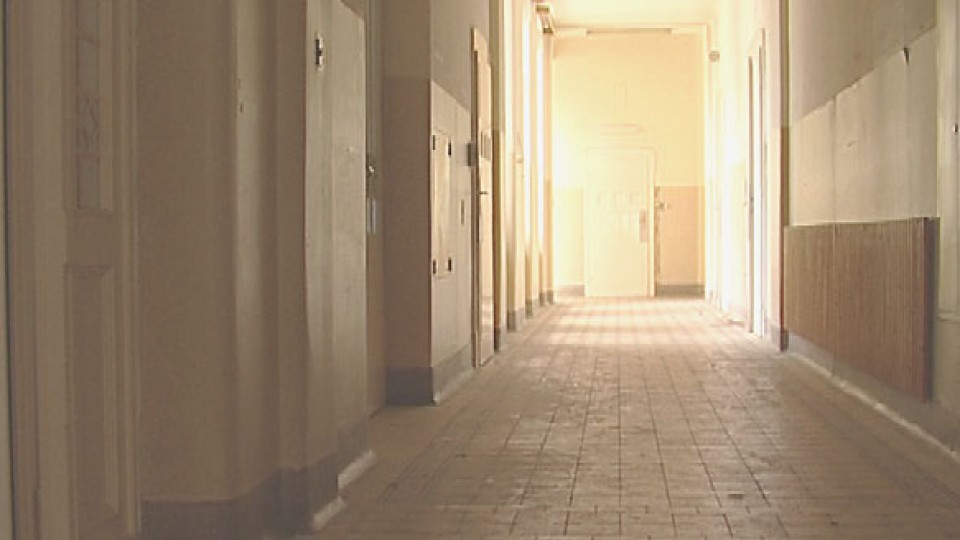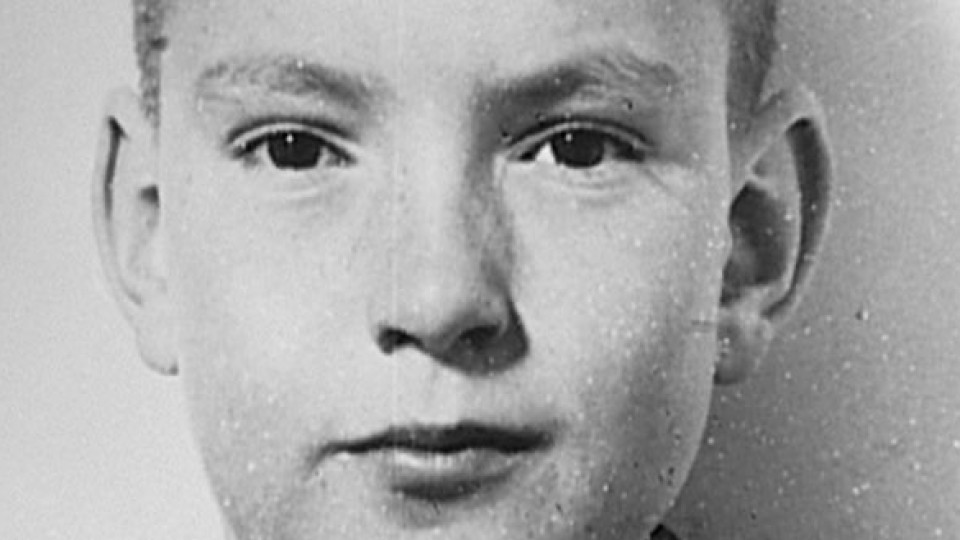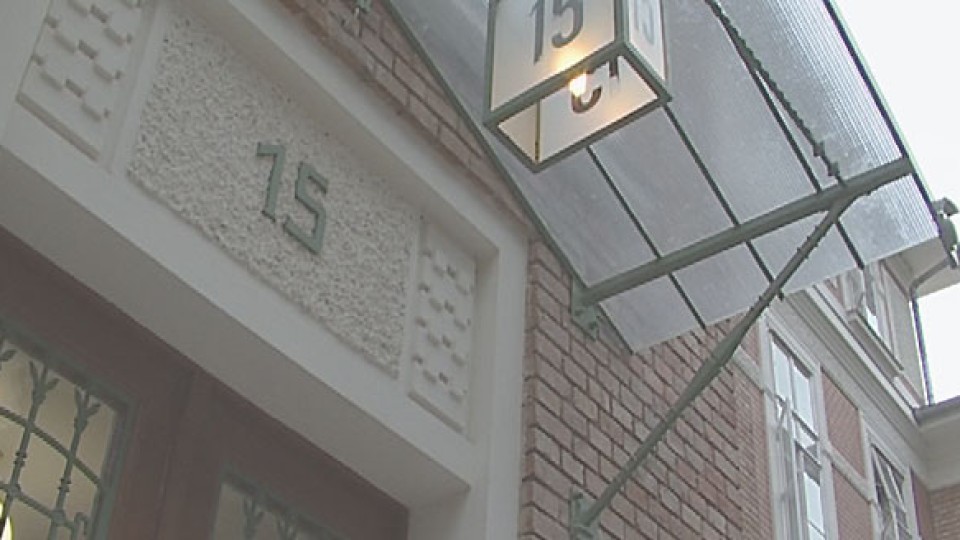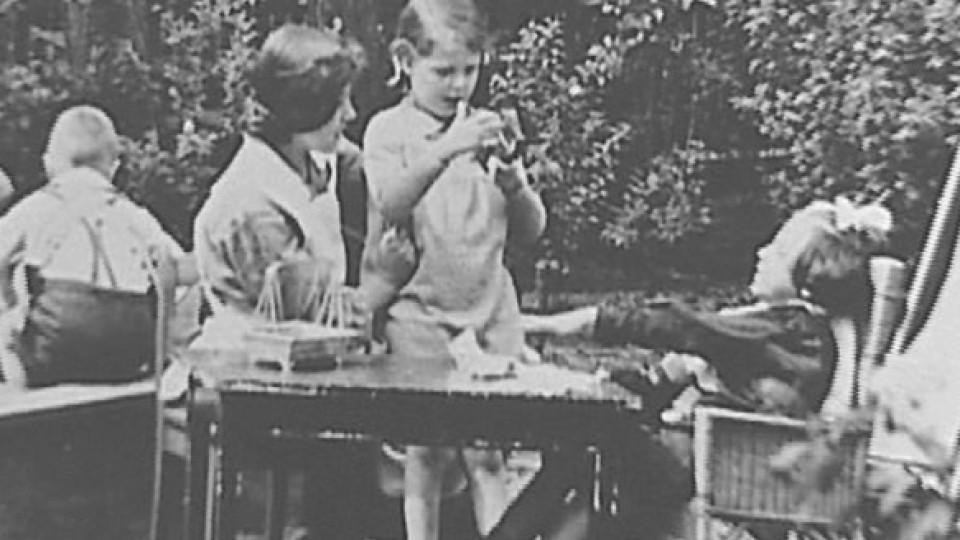«Modern history is almost always treated in an inflationary manner, and often doesn't go into much depth. The Spiegelgrund story is a classic example of attitudes towards the victims since 1945.» Angelika Schuster and Tristan Sindelgruber, on the subject of Spiegelgrund Their documentary showed at Berlin's International Forum of New Cinema.
The Spiegelgrund story is not exactly a subject of major public interest right now. What put you on to it?
ANGELIKA SCHUSTER: The Spiegelgrund was in fact featured in the media because of the proceedings Heinrich Gross instituted against Werner Vogt
in the seventies. But it puzzled me that our film Spiegelgrund and the Gross trial created such a furore, since the story
had long been known. Every five years it comes up again, as if it were something new. Evidently the story has continually
to be rediscovered.
What was it that led you to make a film on this subject?
TRISTAN SINDELGRUBER: I was a teacher of German and History at a secondary school, and had a lot to do with modern history. I was repeatedly confronted
with the problem of how to present modern history to fourteen-year-olds when there are hardly any living witnesses to the
war and immediate post-war period in their families. So the question was, how could I teach this in a history lesson. We had
already worked on a project on Auschwitz. There was a short film about Hartheim that really set the children off. Because
suddenly it was their age group that had been affected by the Nazi regime. This seemed to me to be an exciting way to open
up the subject to young people. The second point is the subject of Gross himself, and the fact that nothing was done about
it for so long.
ANGELIKA SCHUSTER: We both got the idea of making a film at the same time. At that time I was doing street work with young people in Vienna's
20th district. My approach was similar, though I was not working in a school. I worked with young people in council housing,
who were very interested, but who had no opposite numbers with whom they could discuss the subject. I have always been interested
in modern history, but not specifically with euthanasia under the Nazis. For me this subject means crossing a barrier. Modern
history is almost always treated in an inflationary manner, and often doesn't go into much depth. The Spiegelgrund story is
a classic example of attitudes towards the victims since 1945.
I assume that when you planned a film on such a taboo subject, not all doors were immediately opened to you.
ANGELIKA SCHUSTER: We got a lot of support from various quarters. It was easy to get permission to film on the site of the institution. When
the preliminary investigations in the Gross case were set in motion, it became difficult to film the memorial room established
in 1989. And it seems you can expect problems with Styrian bureaucracy if you are an Austrian. Nobody is responsible; they
all pass the buck. It only stops if you say something like "We are in contact with Hamburg". And when the word "internationality"
is dropped then usually things start to move. Stories like the Gross affair often start moving when the foreign media show
some interest. When the interest is merely domestic, one is taken less seriously.
How long did the work on the project take?
TRISTAN SINDELGRUBER: We were lucky in that a lot of research material was made available to us by a journalist. We can't say how much time the
work took. We started thinking in concrete terms in November 1998, and the film was finished in December 1999. For months
our daily routine was to spend the morning trying to soften up official sources so as to get financing, to spend the afternoon
on technical matters or the content of the project, and at a later hour we mulled over the problems and anxieties of those
working with us on the film. We worked round the clock.
What part of the Baumgartner Höhe is occupied by the Spiegelgrund?
ANGELIKA SCHUSTER: On the one hand the Spiegelgrund was an educational institution, known for a time as the Vienna Municipal Young People's Care
Centre, comprising a number of buildings, and on the other hand there was also a so-called care and nursing home, in wards
15 and 17.
Who were the inmates?
ANGELIKA SCHUSTER: The institution's books only turned up very recently. Mainly the inmates were various young people who for different reasons
didn't fit into the system. Perhaps they had rickets, or were not socially adapted, or because of their parents' politics.
The definition of mentally and physically handicapped varies from generation to generation. Wards 15 and 17 of the care and
nursing home tended to house children whom the regime considered could not be integrated into the system, i.e. ultimately
those who were incapable of work. These would have been the children and young people who were misused for medical experiments.
TRISTAN SINDELGRUBER: The killings increased limitlessly over time. Handicapped persons were also used in the running of the institutions, so that
if necessary they could be switched to treating the civilian population. It was thus that the women and girls from Hamburg
came to Vienna. Hamburg was bombed by the allies very early on in the war, and the inhabitants of the institution were thrown
out immediately and deported.
Was it difficult after the war to prove that annihilation was planned and systematic?
ANGELIKA SCHUSTER: It would not have been so difficult, since there were far more case histories than exist today, and there were far more contemporary
witnesses who could have given evidence. In the first few years after 1945 there was still the will to punish the guilty.
There was so much material that it could not all be dealt with, and later, people did not want to deal with it.
Who were those immediately called to account?
TRISTAN SINDELGRUBER: As regards the Spiegelgrund, it was the head of the institution, one doctor and one nurse. After that the processing dropped
off, and an enormous number of documents disappeared.
How were your own physical sensitivities affected while you were engaged on such a project?
ANGELIKA SCHUSTER: The memorial room provides a good example. As long as I was filming, the camera provided a form of protection. I didn't want
to think too deeply about what I was filming. But when I saw it a few hours later on the monitor, I had to leave the room;
I could not stand it. It is dreadful what one sees there, but when you hear the stories of the survivors, that is a completely
different level. As long as we were in the midst of work, we had to concentrate. We simply wanted to make a good film, a cross-section
of history to the present day. This represented a great responsibility we held towards the survivors. The pressure was so
great that there was no room for personal sensitivities. The film is based on a series of interviews with witnesses and scientific
statements, and in between there are long scenes showing the buildings, the silent witnesses, so to speak.
TRISTAN SINDELGRUBER: The exterior shots of the Baumgartner Höhe are the linking elements of the whole story; everything goes back to this place,
and at the same time it represents a cross-section from the beginning of the forties to the present. There are often very
moving statements by the victims, and we don't want simply to jump to the next sequence. Rather, we want to give the viewer
some time for reflection. Initially we didn't want to have any spoken commentary. The statements themselves should alone tell
the story. But that would have been too difficult.
How did you select the persons interviewed?
ANGELIKA SCHUSTER: At the time we started making the film, there were only two people who openly said they had been at the Spiegelgrund as children:
Alois Kaufmann, who has also written a book, and Friedrich Zawrel. A historian friend put us in touch with Alois Kaufmann,
since we didn't want to pressurize people, so to speak. He agreed immediately. He is someone whose everyday life, whose waking
hours are stamped by the Spiegelgrund. Every discussion, every event reminds him and ends at the Spiegelgrund. We came into
contact with Mr. Roggenthien via Antje Kosemund. This was also his first contact with the media.
What was the role of the scientists in the documentation?
TRISTAN SINDELGRUBER: We wanted experts to supply additional information on a theme about which very little is known, thus sparing the victims from
having to provide such facts. But the idea is not that the statements of the victims have thus to be legitimized by the experts.
Their suffering since 1945 has been characterized by them having to prove something. If you start a conversation with them,
they immediately put a folder on the table, since they always have the feeling that they must supply proof.
Did you deliberately not interview Gross?
ANGELIKA SCHUSTER: The decision was deliberate. We specifically wanted the other side to have its say. It is a pity that it is always only Gross
who is in the media. People do not know what the Spiegelgrund is, but the name Gross means something to them. It is good that
he is featured in the media, but it would also have been good if there had been a trial. But leaving the victims so alone
is another matter.
Tristan Sindelgruber: Gross doesn't interest me as a person, but only as a symbol of the way the subject has been treated
since 1945.
So the Gross affair is not the main theme of this documentation?
ANGELIKA SCHUSTER: Much more interesting is the question how something like that could happen; who made the whole system possible. It begins
with midwives, doctors, doctors in administrative positions, and the teachers and guardians who reported these children. People
sitting at desks, filling in forms, who made all this possible. The idea of sharing the guilt and being accessories, above
all the question of responsibility.
Could you briefly say something about the time after December 1999, that is, when the film had been completed?
TRISTAN SINDELGRUBER: The trial opened on 21st March, and was all over within an hour, since Gross claimed he was unfit to plead. The judge then
commissioned two expert opinions, which both stated that Gross was unfit to plead. But the judge also said on 21st March that he himself would consider the position within six months, and only then decide if the proceedings should be concluded
or resumed. And now six months have long passed, and again nothing is happening. On the other hand, Gross happens to have
a very crafty lawyer, who tries to institute proceedings as often as possible once the media start to go into the matter.
In the case of our film there was nothing that could be objected to, but an attempt was made to sue the daily paper Die Presse
after it announced the première. However, this attempt was unsuccessful.
In the light of compensatory payments by the Austrian state, has anything been done for the Spiegelgrund victims?
TRISTAN SINDELGRUBER: As regards the point that the survivors of the home had no claim, as a group, to be included in the legal provisions, nothing
has changed. They would have to claim individually on their own behalf, and would have to produce all the proof needed for
the individual case to be recognized.
ANGELIKA SCHUSTER: Currently there is no other legal way of proceeding; each case is individually decided. The Spiegelgrund survivors belong
to a big, diffuse group of "antisocial" people, who even today have problems in obtaining recognition.
TRISTAN SINDELGRUBER: The mortal remains have still not been buried. They are still in this memorial room, which is no longer open to the public.
This is allegedly because the pathologists have confiscated some of the remains to test whether they show traces of poison.
I don't know how they then would determine who had administered the poison, but that is how matters stand, and burial in Vienna's
central cemetery is in abeyance, though plans have been made, an area reserved and it is even said that there is a finished
memorial waiting.
Do you have the feeling that you have reached the public you wanted?
ANGELIKA SCHUSTER: I don't think you can ever reach the entire public you want. But I am happy that very many school classes have booked special
showings at the cinemas. I am very happy that young people come who would not normally watch anything like that. In ordinary
cinema showings, it has gone down very well for an Austrian documentary with such a thorny subject. I would have liked to
see more exposure in the provinces. But this was a technical question, since the medium used is not conventional film.
TRISTAN SINDELGRUBER: There have been discussions with the TV station 3-SAT, which says it is willing to purchase, and the Austrian ORF is also
interested. But negotiations are proving long drawn out, and nothing has been fixed. Things go more smoothly with foreign
stations.
What was the size of the budget for Spiegelgrund?
ANGELIKA SCHUSTER: The total budget, not including subtitles, for which there was a subsidy, was about ATS 600,000, and I got a year of support for the project from the Austrian Study and Advisory Company. But things will be much more difficult in future for documentaries of this kind, because the budget of the Film Section of the Federal Chancellery , which supported us, has been cut severely. In future, especially people who are unknown, and at the same time want to make a documentary, will have even less chance of realizing their plans.
Nevertheless, you are setting up a new office; that sounds as if you have new projects in mind?
TRISTAN SINDELGRUBER: The National Fund of the Austrian Republic, founded in 1995, is the first public body that has recognized the Spiegelgrund survivors as victims of national socialism, and they each received ATS 70,000 as a symbolic gesture. Following the film, this body now will work with us. We now have the possibility of holding a number of interviews with survivors of national socialism who to date have not been recognized as victims.
They will tell the stories of their lives, not only events in the Nazi era, but also what happened afterwards.
TRISTAN SINDELGRUBER: But we shall not always stick to one period; in the meantime we would like to do something up-to-date.
On critical social themes?
TRISTAN SINDELGRUBER: Yes, always put the cat among the pigeons.
Interview: Karin Schiefer
2001






